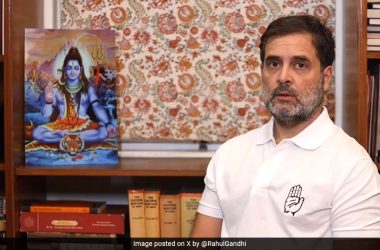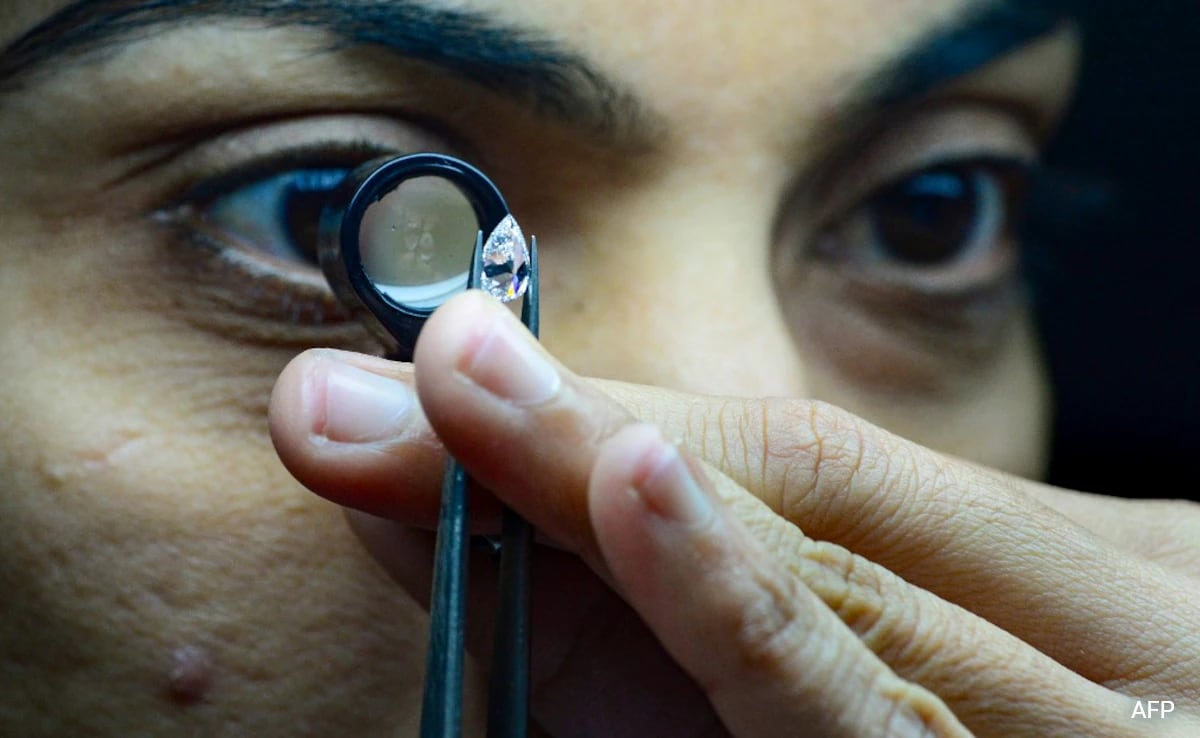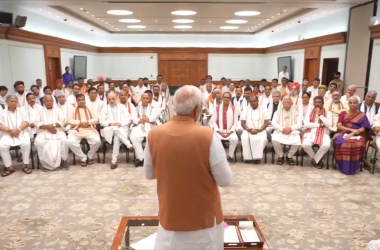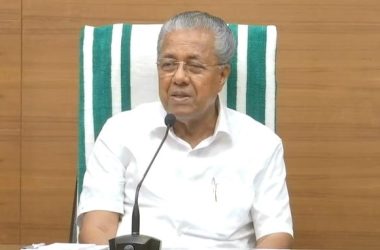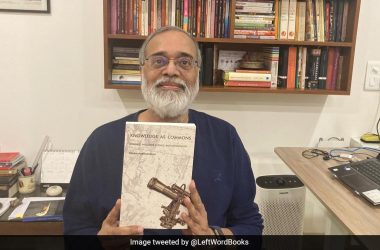Man-made gems are reshaping the $89 billion international diamond jewelry market.
Surat:
The glittering diamonds sparkle the identical however there are key variations: mined pure gems are greater than a billion years previous, whereas laboratory-made rocks are new and value lower than half the value.
Man-made gems are reshaping the $89 billion international diamond jewelry market, particularly within the west Indian metropolis of Surat the place 90 p.c of the world’s diamonds are lower and polished.
In Smit Patel’s gleaming lab, technicians drop crystal diamond “seed” slices into reactors mimicking the intense stress far underground.
“As soon as the client sees it for herself, they’re bought. I imagine that is the longer term,” mentioned Patel, director of Greenlab Diamonds and the third era of his household to deal in diamonds.
From seed to ring-ready jewels, his staff takes lower than eight weeks to supply a diamond just about indistinguishable from a mined gem.
“It is the identical product, it is the identical chemical, the identical optical properties,” Patel mentioned.
Fuel, warmth, stress
Lab-grown diamond exports from India tripled in worth between 2019 and 2022, whereas export volumes rose by 25 p.c between April and October 2023, up from 15 p.c in the identical interval a 12 months earlier, in response to the newest business information.
“We have grown at 400 p.c 12 months on 12 months in quantity,” Patel advised AFP.
Reactors in labs akin to Patel’s are pumped stuffed with carbon-containing gases akin to methane and the crystal grows underneath warmth and stress.
Tough diamonds are then taken to a different facility the place tons of of staff design, lower and polish the stones.
The worldwide market share by worth of lab-grown gems rocketed from 3.5 p.c in 2018 to 18.5 p.c in 2023, New York-based business analyst Paul Zimnisky advised AFP, and can probably exceed 20 p.c this 12 months.
That has heaped stress on an business already racked by geopolitical turmoil and slumping demand.
‘Clear’ stones
Machine-made diamonds had been first developed within the early Fifties but it surely took technological leaps to create a commercially viable course of lower than a decade in the past.
Producers boast that their gems come at a decrease carbon price, though there are questions on whether or not the energy-intensive course of is any higher for the surroundings.
Patel mentioned his lab makes use of photo voltaic vitality from the native grid, though others suck up electrical energy from carbon-heavy sources.
And whereas mined gem sellers say “battle diamonds” from battle zones are stored off the market by means of the worldwide Kimberley Course of certification scheme, lab producers argue their services assure a clear report.
Such environmental and humanitarian claims have helped make lab-grown stones a preferred alternative for engagement rings.
In February 2023, 17 p.c of diamond engagement rings bought in the US — the world’s greatest client of pure stones — used lab-grown gems, in response to business analyst Edahn Golan.
By Golan’s evaluation, it’s now 36 p.c.
This has partly been made doable by tons of of corporations in China and India, each among the many largest producers of artificial stones.
‘Excellent storm’
Indian lab diamond makers exported 4.04 million carats between April and October 2023, a 42 p.c year-on-year enhance, in response to India’s Gem and Jewelry Export Promotion Council (GJEPC).
In distinction, pure diamond corporations in India reported a greater than 25 p.c drop, to 11.3 million carats, over the identical interval.
Whereas pure diamond gross sales in the course of the Covid-19 pandemic surged as prosperous consumers sought to brighten lockdowns with luxurious purchases, demand dropped when economies reopened.
High corporations had been left holding costly extra inventory.
Ajesh Mehta from D.Navinchandra Exports, whose group is one in all international diamond large De Beers Group’s authorised patrons, or “sightholders”, mentioned it was the worst droop in his 30-year profession.
“It is a completely completely different form of lack of demand,” Mehta advised AFP. “The whole lot got here like an ideal storm.”
Elements aside from competitors from lab-grown rivals included slowing financial progress within the all-important US and China markets, in addition to oversupply and sanctions towards Russian rough-cut diamonds.
India’s pure diamond business was pressured right into a uncommon voluntary import ban on tough diamonds in October.
“We needed to press the reset button,” Mehta mentioned. “In any other case individuals would panic.”
At the very least 5 Indian sightholders advised AFP that the De Beers Group had lower costs by between 10 and 25 p.c for various classes of diamonds on the first sale of its 12 months, when patrons restock after the US vacation season.
‘No monopoly’
The lab-grown business has had its issues, too.
Provide has skyrocketed and costs have dropped drastically, with wholesale costs down by 58 p.c in 2023 alone, in response to Golan’s evaluation.
Retailers in Surat advised AFP the value of a lower-quality one-carat polished stone had fallen from $2,400 in 2022 to somewhat over $1,000 in 2023.
WD Lab Grown Diamonds, the second-biggest US producer of the man-made stones, filed for chapter in October.
However Patel argues that falling costs will spur demand.
“We knew that costs would come down, as a result of there is no monopoly on this business,” he mentioned.
Clients in a jewelry showroom in India’s industrial capital Mumbai appeared to agree.
“A mined diamond could be 5 instances costlier,” mentioned 29-year-old Lekha Prabhakar.
“If you would like one thing you need to put on every day… a lab-grown diamond works. I actually like that.”
(Aside from the headline, this story has not been edited by NDTV workers and is printed from a syndicated feed.)
Ready for response to load…
